- Administrator
- Albums and Singles
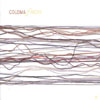 A taste for histrionics may be necessary when listening to the newest music from Alex Paulick and Rob Taylor. Every second of sound is rendered full of nuance and silky ease by way of gentle percussion, wavering melodies, and a deep bass resonance. On top of that is Taylor's voice. It is a voice that immediately reminds of me of lounge act vocalists and jazz crooners howling beneath a deep dark sky lit only by a cloud-veiled moon.
A taste for histrionics may be necessary when listening to the newest music from Alex Paulick and Rob Taylor. Every second of sound is rendered full of nuance and silky ease by way of gentle percussion, wavering melodies, and a deep bass resonance. On top of that is Taylor's voice. It is a voice that immediately reminds of me of lounge act vocalists and jazz crooners howling beneath a deep dark sky lit only by a cloud-veiled moon.
"The Second Closer Still" begins with a beeping rhythm and Taylor singing in a flat-toned voice marked by an incessant and urgent movement. Slowly, other elements are added and by the end violins are momentarily added to achieve a dramatic angle that is only increased by the closing vocals: "They say the first blade shaves you close/The second closer still." It's a promising start and indeed much of the instrumentation on Finery is full and gorgeous but also just a little melodramatic. "You Are Here" and "Summer Clothes" both have just enough cheese in them to make me feel a bit uncomfortable and squeamish. The music would stand well enough on its own. However, Taylor's voice is at the front and center of every song and it sounds just a bit alien in certain places. It's a minor nuisance, but one that builds over time. "The Tailor" and "Green Eyes of the Yellow God" are, on the other hand, brilliantly executed and the vocals (still as dramatic as ever) fit more agreeably with Paulick's arrangements. The former is a violin-led piece drowned in a bit of mystery and a rather sophisticated ether. The latter features a vibraphone and static drum part that skip and hover ambivalently around a keyboard and vocal-centered melody. Much of the second half of Finery sounds better than the first due in part to a more successful blend of the vocals with the instruments. The last few songs are also a bit longer and so everything has more time to develop and play itself out. Coloma's writing is warm and welcoming. Overall they have put together a good collection of dreamy music. Perhaps an instrumental version of the album is in order; the absence of a singer or perhaps a de-empahsizing of the vocals on several of these tracks would have made Finery excellent. 
Read More
- Michael Patrick Brady
- Albums and Singles
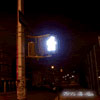 Recorded in a bedroom by three New York artist/musicians, "Young Liars"is the first release from TV On The Radio, and introduces them as afascinating experiment, with a sound that's original and memorable. Themusic groans and creaks beneath the vocals, churning almost, repletewith droning guitars and thudding drums. The percussion is at timesprovided by live drums, or accented with programmed beats, andallegedly sheets of tin. Collages of sampled loops materializemomentarily and then drift away. The most intriguing aspect of "YoungLiars" has to be the vocals, full bodied and soulful, they wouldn'tsound out of place being backed by a funky bass line and horn section,or at the head of some gospel choir like in their acapella rendering ofthe Pixies' "Mr. Grieves." On that hidden track, they sound like awayward choir group, giving the song a great workout that swings as ifit were instead an attack on "Take the A Train." "Satellite" kicks offthe EP with the introduction of this sound, a fuzzy thudding of staticwashed drums and bass with an incessant riff. Then the vocals kick inand it's so unlike the expected, "Now I'm waiting for a signal or asound, where can you be found now? Where can you be, waiting for asignal or a sound?" The song lopes along at a speedy pace, and thelyrics dribble over the beats along with it. "Staring at the Sun" is anabstract love song, a collection of images or glances from up close."Blind" is a slow, creeping track that pulses along as errant noisesappear just above it. The group has a knack for memorable lines thatconnect through their lyrical collections like "My love is a suckerbet." It's a departure from the speed of the first tracks, showing thatthey're capable of producing more methodical atmospheres, and againshowcasing those vocals as they play around in the space left by theinstrumentation. "Young Liars" is an excellent first taste that leavesus to anticipate the upcoming full length
Recorded in a bedroom by three New York artist/musicians, "Young Liars"is the first release from TV On The Radio, and introduces them as afascinating experiment, with a sound that's original and memorable. Themusic groans and creaks beneath the vocals, churning almost, repletewith droning guitars and thudding drums. The percussion is at timesprovided by live drums, or accented with programmed beats, andallegedly sheets of tin. Collages of sampled loops materializemomentarily and then drift away. The most intriguing aspect of "YoungLiars" has to be the vocals, full bodied and soulful, they wouldn'tsound out of place being backed by a funky bass line and horn section,or at the head of some gospel choir like in their acapella rendering ofthe Pixies' "Mr. Grieves." On that hidden track, they sound like awayward choir group, giving the song a great workout that swings as ifit were instead an attack on "Take the A Train." "Satellite" kicks offthe EP with the introduction of this sound, a fuzzy thudding of staticwashed drums and bass with an incessant riff. Then the vocals kick inand it's so unlike the expected, "Now I'm waiting for a signal or asound, where can you be found now? Where can you be, waiting for asignal or a sound?" The song lopes along at a speedy pace, and thelyrics dribble over the beats along with it. "Staring at the Sun" is anabstract love song, a collection of images or glances from up close."Blind" is a slow, creeping track that pulses along as errant noisesappear just above it. The group has a knack for memorable lines thatconnect through their lyrical collections like "My love is a suckerbet." It's a departure from the speed of the first tracks, showing thatthey're capable of producing more methodical atmospheres, and againshowcasing those vocals as they play around in the space left by theinstrumentation. "Young Liars" is an excellent first taste that leavesus to anticipate the upcoming full lengthRead More
- Administrator
- Albums and Singles
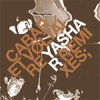 In 1982, the original version of "Yashar" ushered in a new phase ofCabaret Voltaire. While the group had been working for years with drummachines, they were only up until then teasing the ideas of dancemusic. Originally on the 2x45release and later remixed for 12" by John Robie, this was undeniablythe beginning of what soon became their dancefloor-friendly big funkphase. Once the classic opening voice-only sample sounds, "there's 70billion people in there / where're they hiding," everybody knows thefamiliar pumping beats and evil synth melody that is about to follow.While remixing songs that weren't exactly discotheque smashes hasbecome commonplay, there's a lot at stake when considering remixingsomething that has become somewhat of a sacred underground dancefloorlegend. The results are very nice indeed. This three-track 12" onlyrelease is covered on side one by a vicious, nearly ten minutethunderous mayhem by Alter Ego which I have had to force myself fromnot repeating endlessly. While only the underlying synth stem remains,the power and energy from the original is exponentially magnified. Tenminutes can be a long time but with this, it seems like it couldhonestly go on forever. Side two features the proverbial rework byRichard H. Kirk: "The Man from Basra" remix honorably matches theenergy set forth by the A side. Kirk imports the familiar vocal samplesfrom the original and continues on in a hypnotic five minute synth soupof constructive 808, 909, and African-imitative sounds. Rounding outthe second side is The All Seeing I remix, which most closely resemblesthe original remix done by John Robie with the singing girls and higherpitched synth melody. This version also pays tribute to the popularsounds of the 1990s Cabaret Voltaire with its downtempo beats, heavilyrelied upon by primitive analogue drum machine sounds. The only beef Ihave with the single is its $9 import 12" price that I had to forkover, making me recommend NovaMute to do another goddamned CDcompilation like the one aforementioned this week. Die hard non-UK fanswho miss out on this risk their chances of this not making the nextcompilation (or no next compilation at all). With any luck, Mute willwise up and give a break for their export single prices.
In 1982, the original version of "Yashar" ushered in a new phase ofCabaret Voltaire. While the group had been working for years with drummachines, they were only up until then teasing the ideas of dancemusic. Originally on the 2x45release and later remixed for 12" by John Robie, this was undeniablythe beginning of what soon became their dancefloor-friendly big funkphase. Once the classic opening voice-only sample sounds, "there's 70billion people in there / where're they hiding," everybody knows thefamiliar pumping beats and evil synth melody that is about to follow.While remixing songs that weren't exactly discotheque smashes hasbecome commonplay, there's a lot at stake when considering remixingsomething that has become somewhat of a sacred underground dancefloorlegend. The results are very nice indeed. This three-track 12" onlyrelease is covered on side one by a vicious, nearly ten minutethunderous mayhem by Alter Ego which I have had to force myself fromnot repeating endlessly. While only the underlying synth stem remains,the power and energy from the original is exponentially magnified. Tenminutes can be a long time but with this, it seems like it couldhonestly go on forever. Side two features the proverbial rework byRichard H. Kirk: "The Man from Basra" remix honorably matches theenergy set forth by the A side. Kirk imports the familiar vocal samplesfrom the original and continues on in a hypnotic five minute synth soupof constructive 808, 909, and African-imitative sounds. Rounding outthe second side is The All Seeing I remix, which most closely resemblesthe original remix done by John Robie with the singing girls and higherpitched synth melody. This version also pays tribute to the popularsounds of the 1990s Cabaret Voltaire with its downtempo beats, heavilyrelied upon by primitive analogue drum machine sounds. The only beef Ihave with the single is its $9 import 12" price that I had to forkover, making me recommend NovaMute to do another goddamned CDcompilation like the one aforementioned this week. Die hard non-UK fanswho miss out on this risk their chances of this not making the nextcompilation (or no next compilation at all). With any luck, Mute willwise up and give a break for their export single prices.Read More
- Administrator
- Albums and Singles
 Easily one of my favorite labels, Novamute serves as the dance-orientedwing of the ever-enduring Mute Records machine. More than a fair dealof its materials comes out exclusively on vinyl, leaving the widerconsumer market unexposed to some of the best electronic music around.An effort to both rectify this and to tap into the growing market of CDand "digital" DJs, 2CDs and MP3soffers 16 audio tracks and 28 somewhat overlapping MP3 files.Considering the strength of the Novamute roster (as well as that of theextended Mute family), the selections range from techno floorfillersand electro booty grooves to chin-scratching warm-ups andindustrial/EBM reworks. Though there are many enjoyabledancefloor-friendly cuts, the first noteworthy track comes from S.I.Futures. The FX mix of "Eurostar" takes the melodic vocoding of theelectro original and injects a rejuvenating funky vibe. Speedy J'sunedited cut of "Krekc," the lead single from his recent Loudboxeralbum, blisters the eardrums with seriously banging techno meant forwarehouses. EBM fanatics will either be disturbed or delighted to hearThomas P. Heckmann's update of the Nitzer Ebb anthem "Join In TheChant." Though the distinctive bassline remains admirably true to theoriginal, Douglas McCarthy's completely vocoded vocals seem almostblasphemous. As an industrial club DJ, I have tested the dancefloorseveral times with this, and while it does not go over as well as theoriginal, it still gets a great crowd response. Continuing theindustrial updates, Akufen's quirky remix of Cabaret Voltaire's "NagNag Nag" mangles the original beyond recognition yet manages to salvagethe wreck by throwing in a gritty 4/4 beat at about the halfway point.The laugh factor behind Debasser's "Fat Girls" thankfully does not takeaway from its appeal as a bass heavy booty mover, and sounds far betterthan most of the socalled "ghetto-tech" coming out today. HansWeekhout's "Rhythm Is On A Mission" treads a murky territory betweentechno and progressive house, with echoing synth stabs and tribalmachine beats. The MP3 content gives plenty of B-sides includingfurther goodies from the artists mentioned above as well as Tim Wright,Umek, Steve Stoll, and Luke Slater. All in all, this is not merely agreat compilation, but rather a pioneering release that will hopefullybegin a trend.
Easily one of my favorite labels, Novamute serves as the dance-orientedwing of the ever-enduring Mute Records machine. More than a fair dealof its materials comes out exclusively on vinyl, leaving the widerconsumer market unexposed to some of the best electronic music around.An effort to both rectify this and to tap into the growing market of CDand "digital" DJs, 2CDs and MP3soffers 16 audio tracks and 28 somewhat overlapping MP3 files.Considering the strength of the Novamute roster (as well as that of theextended Mute family), the selections range from techno floorfillersand electro booty grooves to chin-scratching warm-ups andindustrial/EBM reworks. Though there are many enjoyabledancefloor-friendly cuts, the first noteworthy track comes from S.I.Futures. The FX mix of "Eurostar" takes the melodic vocoding of theelectro original and injects a rejuvenating funky vibe. Speedy J'sunedited cut of "Krekc," the lead single from his recent Loudboxeralbum, blisters the eardrums with seriously banging techno meant forwarehouses. EBM fanatics will either be disturbed or delighted to hearThomas P. Heckmann's update of the Nitzer Ebb anthem "Join In TheChant." Though the distinctive bassline remains admirably true to theoriginal, Douglas McCarthy's completely vocoded vocals seem almostblasphemous. As an industrial club DJ, I have tested the dancefloorseveral times with this, and while it does not go over as well as theoriginal, it still gets a great crowd response. Continuing theindustrial updates, Akufen's quirky remix of Cabaret Voltaire's "NagNag Nag" mangles the original beyond recognition yet manages to salvagethe wreck by throwing in a gritty 4/4 beat at about the halfway point.The laugh factor behind Debasser's "Fat Girls" thankfully does not takeaway from its appeal as a bass heavy booty mover, and sounds far betterthan most of the socalled "ghetto-tech" coming out today. HansWeekhout's "Rhythm Is On A Mission" treads a murky territory betweentechno and progressive house, with echoing synth stabs and tribalmachine beats. The MP3 content gives plenty of B-sides includingfurther goodies from the artists mentioned above as well as Tim Wright,Umek, Steve Stoll, and Luke Slater. All in all, this is not merely agreat compilation, but rather a pioneering release that will hopefullybegin a trend. - Debasser - Fat Girls
- Hans Weekhout - Rhythm is On A Mission
- Cabaret Voltaire - Nag Nag Nag (Akufen remix)
Read More
- Administrator
- Albums and Singles
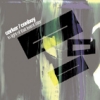 Paul Conboy and Adrian Corker create instrumental music with mostlyelectronic percussion and nuance, but layered with acoustic guitars.Once I slipped their debut on the stereo, I was immediately at ease,relaxed, and open to every possibility. Playful bass and latin jazzrhythms mark one track, slower moody computer whines and echoed guitarthe next, but throughout there's a coordinated groove or feel thatevery composition nuzzles up to lovingly. It's not stunning,demonstrative, or the next big style shift, but it doesn't have to beto be effective. Corker/Conboy may borrow a bit from the aesthetic ofothers — Tortoise, Pullman, and Isotope 217 come to mind — but itdoesn't mean they breathe any less life into their work. Playing mostof the instruments themselves, the duo have a true fluidity and ease totheir songs. The music starts off lightly, establishing rhythm andtempo, and doesn't build so much as coagulate. Each part or instrumenthas its own time, its own place, but ultimately they exist to fulfillthe needs of the whole composition. Listening to a track like "From theHip," hearing its simplicity, and being thrown slightly by the littletinges here and there set my mind at ease, almost into REM-like stasis.One minute I was in a sweaty nightclub hearing a neo jazz outfit, thenext in the rainforest hearing the most advanced tribe of natives tapout their steady labor. In Light of That Learnt Laterflows through despite its various genre bends, and it's an excellentdriving companion — the best compliment I can think to give it.
Paul Conboy and Adrian Corker create instrumental music with mostlyelectronic percussion and nuance, but layered with acoustic guitars.Once I slipped their debut on the stereo, I was immediately at ease,relaxed, and open to every possibility. Playful bass and latin jazzrhythms mark one track, slower moody computer whines and echoed guitarthe next, but throughout there's a coordinated groove or feel thatevery composition nuzzles up to lovingly. It's not stunning,demonstrative, or the next big style shift, but it doesn't have to beto be effective. Corker/Conboy may borrow a bit from the aesthetic ofothers — Tortoise, Pullman, and Isotope 217 come to mind — but itdoesn't mean they breathe any less life into their work. Playing mostof the instruments themselves, the duo have a true fluidity and ease totheir songs. The music starts off lightly, establishing rhythm andtempo, and doesn't build so much as coagulate. Each part or instrumenthas its own time, its own place, but ultimately they exist to fulfillthe needs of the whole composition. Listening to a track like "From theHip," hearing its simplicity, and being thrown slightly by the littletinges here and there set my mind at ease, almost into REM-like stasis.One minute I was in a sweaty nightclub hearing a neo jazz outfit, thenext in the rainforest hearing the most advanced tribe of natives tapout their steady labor. In Light of That Learnt Laterflows through despite its various genre bends, and it's an excellentdriving companion — the best compliment I can think to give it. Read More
- Michael Patrick Brady
- Albums and Singles
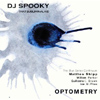 If you happened to catch any of the installments of Ken Burns'sprawling nineteen hour documentary on jazz a few years back, you mayhave wondered what exactly happened to jazz in the second half of thetwentieth century. The filmmaker's heavy reliance on Wynton Marsalisand the various other talented members of his family tended to skew thefocus of the series in the direction of Wynton's classicist ideals. The1960's and beyond are crammed into the last hour of this mammothseries, an injustice to say the least. Adding insult to injury,Wynton's commentary is particularly dismissive of the strides taken byicons like Miles Davis toward a more inclusive and adaptive mode ofjazz music known as fusion. When it is referenced at all, the music ofMiles-disciple Chick Corea or electric-guitar virtuoso Pat Metheny istalked about as if it were a negative influence threatening to ruinjazz. This is a shame, because the experiments of fusion andavant-garde jazz should be viewed as every bit as vital as the classicstyle; god forbid anyone try and avoid becoming stale. For the past fewyears, indie label Thirsty Ear has issued music under their 'BlueSeries' banner, releasing music that blends and transforms jazz, hiphop, rap, and electronic music with some interesting pairings. On thisrelease, modern jazz pianist and Blue Series curator Matthew Shipp andhis group back up DJ Spooky as he indulges his thirst for progressiveintellectualism in music. Spooky clearly wants to incorporate as muchas he can into his music, as evidenced by a few of the names dropped inthe liner notes (Duchamps, Dostoyevsky, Cage, Ellington, Berners-Lee,Bambatta). In text this might make you wary, but on record Optometryis a fascinating excursion, with Spooky and Shipp navigating throughthe blurry water of fusion brilliantly. Kicking off with the familiarride and high hat clicking, the slinky upright bass line (manned bySpooky himself) rising through, Optometry throws a curveball bycutting, mixing, and looping the beats, a subtle addition that workswell. Programmed beats, electronic throbs, and wailing violin all findspots on the record, and are used to great effect, counterpointing thetraditional (but only in instrumentation) jazz quartet. Shipp is aversatile pianist, and his hands float across the keys weaving amazingpatterns of tone, able to rise above the mix whenever necessary. Guestsappear, giving us Carl Hancock Rux's smooth spoken word delivery over"Asphalt (Tome II)," where he waxes on about Coltrane and Lil' Kim,minidisks and turntables. Essentially, it is the mission concept of therecord. Jon McPhee's tenor sax croaks around Rux's witnessing, makingthis a true standout. High Priest of Anti-Pop Consortium and Napoleonof IsWhat also appear, lending their hip-hop skills other tracks, theformer sounding stronger than the latter. 'Optometry' is the essence ofexperimentation. Grounded in the jazz medium, it looks outside ofitself for inspiration and seeks to infuse new blood, not just intojazz, but into the styles it couples with. Jazz is not a museum. Musicnever should be. It has strength and power, enough to offer somethingto contemporary music and retain its rich history. The Blue Seriesseems to have a hold on that, thankfully. 'Optometry' is not at all thekind of record you would find in Wynton Marsailis' collection, but inmy opinion, that stands as more of a recommendation of this than justabout anything else does.
If you happened to catch any of the installments of Ken Burns'sprawling nineteen hour documentary on jazz a few years back, you mayhave wondered what exactly happened to jazz in the second half of thetwentieth century. The filmmaker's heavy reliance on Wynton Marsalisand the various other talented members of his family tended to skew thefocus of the series in the direction of Wynton's classicist ideals. The1960's and beyond are crammed into the last hour of this mammothseries, an injustice to say the least. Adding insult to injury,Wynton's commentary is particularly dismissive of the strides taken byicons like Miles Davis toward a more inclusive and adaptive mode ofjazz music known as fusion. When it is referenced at all, the music ofMiles-disciple Chick Corea or electric-guitar virtuoso Pat Metheny istalked about as if it were a negative influence threatening to ruinjazz. This is a shame, because the experiments of fusion andavant-garde jazz should be viewed as every bit as vital as the classicstyle; god forbid anyone try and avoid becoming stale. For the past fewyears, indie label Thirsty Ear has issued music under their 'BlueSeries' banner, releasing music that blends and transforms jazz, hiphop, rap, and electronic music with some interesting pairings. On thisrelease, modern jazz pianist and Blue Series curator Matthew Shipp andhis group back up DJ Spooky as he indulges his thirst for progressiveintellectualism in music. Spooky clearly wants to incorporate as muchas he can into his music, as evidenced by a few of the names dropped inthe liner notes (Duchamps, Dostoyevsky, Cage, Ellington, Berners-Lee,Bambatta). In text this might make you wary, but on record Optometryis a fascinating excursion, with Spooky and Shipp navigating throughthe blurry water of fusion brilliantly. Kicking off with the familiarride and high hat clicking, the slinky upright bass line (manned bySpooky himself) rising through, Optometry throws a curveball bycutting, mixing, and looping the beats, a subtle addition that workswell. Programmed beats, electronic throbs, and wailing violin all findspots on the record, and are used to great effect, counterpointing thetraditional (but only in instrumentation) jazz quartet. Shipp is aversatile pianist, and his hands float across the keys weaving amazingpatterns of tone, able to rise above the mix whenever necessary. Guestsappear, giving us Carl Hancock Rux's smooth spoken word delivery over"Asphalt (Tome II)," where he waxes on about Coltrane and Lil' Kim,minidisks and turntables. Essentially, it is the mission concept of therecord. Jon McPhee's tenor sax croaks around Rux's witnessing, makingthis a true standout. High Priest of Anti-Pop Consortium and Napoleonof IsWhat also appear, lending their hip-hop skills other tracks, theformer sounding stronger than the latter. 'Optometry' is the essence ofexperimentation. Grounded in the jazz medium, it looks outside ofitself for inspiration and seeks to infuse new blood, not just intojazz, but into the styles it couples with. Jazz is not a museum. Musicnever should be. It has strength and power, enough to offer somethingto contemporary music and retain its rich history. The Blue Seriesseems to have a hold on that, thankfully. 'Optometry' is not at all thekind of record you would find in Wynton Marsailis' collection, but inmy opinion, that stands as more of a recommendation of this than justabout anything else does.Read More
- Administrator
- Albums and Singles
 It's rare that I hear a record and feel like every single song on itmakes me want to shut up and dance, but that's exactly what the debutfull-length by Susumu Mukai’s Zongamin does to me. It very well may bethe pop club album of the year, because it's this type of music thatgets the bodies and booties on the dancefloor. Zongamin's auralpastiche is an amalgam of myriad styles and musical configurations.Dance and club music created with live and electronic instrumentsalike, using latin, funk, jazz, rock, and techno rhythms, and allblended together into a formula that stutters, grooves, tweaks andslams. I took it all in one listen, just giving in to whatever washedover the speakers next. It wasn't easy: not any two songs on the recordhave the same flavor, and it's hard to give in to the whole enchilada.That's not a huge surprise for a first effort, as if Mukai is trying tofind a voice and gives his all in multiple directions. Something tellsme, though, that Mukai intended Zongamin to sound this disjointed ashis vision of what pop music should be: a place where anything andeverything is allowed. "Serious Trouble" gets the party started withits discobass and stroll style, but gives in to the drive of "Spiral,"easily the best track. "Painless," "Double Dostiev" and "Whiplash"makes for a great album centerpiece, clubbing it up, twisting andfreaking, then serving the almighty pummel into submission. After that,the album gets plain strange, with the differing styles fluctuating toextremes. The good news is that the record is an accomplished debutfrom a very talented artist. The bad news is he's being pulled in toomany directions at once, but would probably be tied down too much by asingular style. One thing is certain: Zongamin is an original voice,definitely the product of many influences, that can certainly generatemore than a few earnest gyrations.
It's rare that I hear a record and feel like every single song on itmakes me want to shut up and dance, but that's exactly what the debutfull-length by Susumu Mukai’s Zongamin does to me. It very well may bethe pop club album of the year, because it's this type of music thatgets the bodies and booties on the dancefloor. Zongamin's auralpastiche is an amalgam of myriad styles and musical configurations.Dance and club music created with live and electronic instrumentsalike, using latin, funk, jazz, rock, and techno rhythms, and allblended together into a formula that stutters, grooves, tweaks andslams. I took it all in one listen, just giving in to whatever washedover the speakers next. It wasn't easy: not any two songs on the recordhave the same flavor, and it's hard to give in to the whole enchilada.That's not a huge surprise for a first effort, as if Mukai is trying tofind a voice and gives his all in multiple directions. Something tellsme, though, that Mukai intended Zongamin to sound this disjointed ashis vision of what pop music should be: a place where anything andeverything is allowed. "Serious Trouble" gets the party started withits discobass and stroll style, but gives in to the drive of "Spiral,"easily the best track. "Painless," "Double Dostiev" and "Whiplash"makes for a great album centerpiece, clubbing it up, twisting andfreaking, then serving the almighty pummel into submission. After that,the album gets plain strange, with the differing styles fluctuating toextremes. The good news is that the record is an accomplished debutfrom a very talented artist. The bad news is he's being pulled in toomany directions at once, but would probably be tied down too much by asingular style. One thing is certain: Zongamin is an original voice,definitely the product of many influences, that can certainly generatemore than a few earnest gyrations.Read More
- Administrator
- Albums and Singles
 Subtlety can either add to a composition or take away from it. Ifunderstatement is enough to carry a tune then there's no reason to addanything to it. It Would Have Lived Hereis a very careful album and ends up benefitting for it. Everything isbare bones and this approach works very well. Most of the tones usedare metallic in nature and percussive but more often than not there areless musical and more found-sound effects used. Everything beginsrather enigmatically: there is rhythm, but it heeds to no timesignature. There is a bass-like strumming throughout and the sound oftiny cymbals chiming everywhere, but no melody to speak of. Randomsounds bounce back and forth between my ears and now and again there'sa quick stab of recognizable speech but it's distant. Metallic soundsrun throughout this full-length but in different forms. Some are usedto create short melodic lines, others produce a constant backgroundnoise that ties the various tracks together in different ways, andothers simply pop in and out of the music like images of killing yourboss during a hectic day of work. Nothing ever jumps out and grabs myattention immediately. Every moment is saturated with interestingsounds that stretch, echo, and breathe without interference. The sensethat the sounds are somehow coming from a living, breathing thing isstrong and a bit unsettling at times. Snawklor obviously pay closeattention to detail and the result of their patience is nothing shortof beautiful. Despite its rather abstract nature it is highlyaccessible and fun to listen to.
Subtlety can either add to a composition or take away from it. Ifunderstatement is enough to carry a tune then there's no reason to addanything to it. It Would Have Lived Hereis a very careful album and ends up benefitting for it. Everything isbare bones and this approach works very well. Most of the tones usedare metallic in nature and percussive but more often than not there areless musical and more found-sound effects used. Everything beginsrather enigmatically: there is rhythm, but it heeds to no timesignature. There is a bass-like strumming throughout and the sound oftiny cymbals chiming everywhere, but no melody to speak of. Randomsounds bounce back and forth between my ears and now and again there'sa quick stab of recognizable speech but it's distant. Metallic soundsrun throughout this full-length but in different forms. Some are usedto create short melodic lines, others produce a constant backgroundnoise that ties the various tracks together in different ways, andothers simply pop in and out of the music like images of killing yourboss during a hectic day of work. Nothing ever jumps out and grabs myattention immediately. Every moment is saturated with interestingsounds that stretch, echo, and breathe without interference. The sensethat the sounds are somehow coming from a living, breathing thing isstrong and a bit unsettling at times. Snawklor obviously pay closeattention to detail and the result of their patience is nothing shortof beautiful. Despite its rather abstract nature it is highlyaccessible and fun to listen to.Read More
- Administrator
- Albums and Singles
 On Frankie Sparo's last full-length, My Red Scare,he created his own brand of chilling folk mostly on his lonesome withthe help of some friends and labelmates. Now his group has grown to afull-fledged and powerful duo with the addition of Nadia Moss on anyinstrument with keys. He's also brought along some old friends from ASilver Mt. Zion: Sophie, Thierry and Efrim all play on the album withthe latter also handling recording duties at Hotel2Tango. The result isa growth from the previous record while retaining the same qualitiesthat made Sparo so engaging in the first place. Welcome Crummy Mystics is also a jarring, hair-raising listen, as the new orchestral direction Sparo started on Arena Hostilesees fruition with new original compositions that explore differentrhythms and musical forms. Odd sounds captured here and there make theheart jump, as does Sparo's voice and delivery. "Hospitalville"features compression effects that scatter and depurify the drums andSparo's vocals. He does it himself on "Back on Speed," screaming andletting his voice buckle under the pressure, backed at the end by abizarre choir. The minimalism of the past is still present on a fewsongs, such as "Sleds to Moderne" and "Bright Angel Park," but thearrangements and contributions of the guest musicians give the musicand performance amazing depth. The addition of Moss cannot beunderstated, however, as it is her instrumentation that is the mostvital, that separates these structures from others in the genre like somuch musical three-point lighting. Together, she and Frankie Sparo areforming a new language that they want to teach the world. It soundsgreat so far, and there's nothing lost in the translation. -
On Frankie Sparo's last full-length, My Red Scare,he created his own brand of chilling folk mostly on his lonesome withthe help of some friends and labelmates. Now his group has grown to afull-fledged and powerful duo with the addition of Nadia Moss on anyinstrument with keys. He's also brought along some old friends from ASilver Mt. Zion: Sophie, Thierry and Efrim all play on the album withthe latter also handling recording duties at Hotel2Tango. The result isa growth from the previous record while retaining the same qualitiesthat made Sparo so engaging in the first place. Welcome Crummy Mystics is also a jarring, hair-raising listen, as the new orchestral direction Sparo started on Arena Hostilesees fruition with new original compositions that explore differentrhythms and musical forms. Odd sounds captured here and there make theheart jump, as does Sparo's voice and delivery. "Hospitalville"features compression effects that scatter and depurify the drums andSparo's vocals. He does it himself on "Back on Speed," screaming andletting his voice buckle under the pressure, backed at the end by abizarre choir. The minimalism of the past is still present on a fewsongs, such as "Sleds to Moderne" and "Bright Angel Park," but thearrangements and contributions of the guest musicians give the musicand performance amazing depth. The addition of Moss cannot beunderstated, however, as it is her instrumentation that is the mostvital, that separates these structures from others in the genre like somuch musical three-point lighting. Together, she and Frankie Sparo areforming a new language that they want to teach the world. It soundsgreat so far, and there's nothing lost in the translation. - Read More
- Administrator
- Albums and Singles
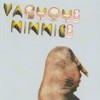 Hang a fat chick in a sequin jumpsuit from the ceiling and break outthe cocaine. The beats are fat, the melodies are slick, and theinstrumentation is a biological mass of boogiemania. Vacuous Ninnies'self-titled party-on-a-CD is an accumulation of strange sounds that arecut, pasted, manipulated, and arranged into either dancey fireballs orultra cool chillouts. What's interesting is that none of that fluffyand yuppy-like smooth production is employed nor are any minimalistictendencies revealed. The samples are robust and lively and mixed intobeautiful melodies and chugging beats. Although "Cripples Fall Down"opens the album, it's the fun-machine known as "(Can't) Get Up" thatreally kicks things off. It's full of dissected vocal samples, glidingsynthesizers that cut the air like a jet of pure 80's soul and arumptastic, rubbery beat. The slower songs have a more wondering feelabout them: there isn't always a fixed melody and the beat isn't alwaysexplosive but the effect is gentle and ravishing. There's a sense ofhumor throughout this full-length, too. Some of the samples used areabsolutely whacky and at times a bit psychadelic. None of the music hasa serious or "arty" attitude. The sounds don't always glide togetherflawlessly and as a result the melodies can sound just slightlyout-of-control or off-center. Why bother "perfecting" something likethis when it sounds so exceptional in a wild and untamed state? I getthe distinct impression that whoever the Vacuous Ninnies are, they hada whole lot of fun making this.
Hang a fat chick in a sequin jumpsuit from the ceiling and break outthe cocaine. The beats are fat, the melodies are slick, and theinstrumentation is a biological mass of boogiemania. Vacuous Ninnies'self-titled party-on-a-CD is an accumulation of strange sounds that arecut, pasted, manipulated, and arranged into either dancey fireballs orultra cool chillouts. What's interesting is that none of that fluffyand yuppy-like smooth production is employed nor are any minimalistictendencies revealed. The samples are robust and lively and mixed intobeautiful melodies and chugging beats. Although "Cripples Fall Down"opens the album, it's the fun-machine known as "(Can't) Get Up" thatreally kicks things off. It's full of dissected vocal samples, glidingsynthesizers that cut the air like a jet of pure 80's soul and arumptastic, rubbery beat. The slower songs have a more wondering feelabout them: there isn't always a fixed melody and the beat isn't alwaysexplosive but the effect is gentle and ravishing. There's a sense ofhumor throughout this full-length, too. Some of the samples used areabsolutely whacky and at times a bit psychadelic. None of the music hasa serious or "arty" attitude. The sounds don't always glide togetherflawlessly and as a result the melodies can sound just slightlyout-of-control or off-center. Why bother "perfecting" something likethis when it sounds so exceptional in a wild and untamed state? I getthe distinct impression that whoever the Vacuous Ninnies are, they hada whole lot of fun making this. Read More
- Administrator
- Albums and Singles
 The much anticipated synthesized sexual symphony of Hecate's RachaelKozak and Venetian Snares' Aaron Funk is quite clinical in its finalstate. Created entirely from sounds of the two's sexcapades in variousplaces on their tour, the music is more appealing in the creationconcept. What's left at the end are the thumps of bed posts as bassdrum kicks, loads of high-pitched rhythmic sounds and only a tinysplash of bedroom banter. The second cut (or first non-filler song ifyou discount the Intro) "Blood on the Rope" gives a lot of hope withsome heavy breathing and some skin slapping sounds towards thebeginning, but it shortly gives way to moderately unchallengingmechanic dark drum 'n bass. The two deserve credit for assembling 35minutes of music which rarely resemble the original sources, butthere's something to be said for a stronger incorporation of untouchedrecordings back in to the mix once things have become unrecognizable.After being in love with the previous two brilliant EPs from VenetianSnares on Hymen, the Nymphomatriarch is musically a let-down as itdoesn't even seem as provocative or daring as either nor as the hypewould make it seem. Fans of clean drum 'n bass sounds might feelslightly different, however, and with about 12 minutes of underwaterambience smack-dab in the middle, those who can only read about sexmight find a charge. The closest this extended single comes to orgasmicis in the second to last track (or last non-filler track) "Pervs,"where more skin slapping could be taking place, but it's so far removedfrom recognition that it could easily be just another clever computerplugin. Perhaps I'm too much of a sick pervert, myself, but I think Iwas truly jonesing for a more voyeuristic and unlubricated experience,one where the sound could conjure the smells of the breath and fluidsof everybody involved.
The much anticipated synthesized sexual symphony of Hecate's RachaelKozak and Venetian Snares' Aaron Funk is quite clinical in its finalstate. Created entirely from sounds of the two's sexcapades in variousplaces on their tour, the music is more appealing in the creationconcept. What's left at the end are the thumps of bed posts as bassdrum kicks, loads of high-pitched rhythmic sounds and only a tinysplash of bedroom banter. The second cut (or first non-filler song ifyou discount the Intro) "Blood on the Rope" gives a lot of hope withsome heavy breathing and some skin slapping sounds towards thebeginning, but it shortly gives way to moderately unchallengingmechanic dark drum 'n bass. The two deserve credit for assembling 35minutes of music which rarely resemble the original sources, butthere's something to be said for a stronger incorporation of untouchedrecordings back in to the mix once things have become unrecognizable.After being in love with the previous two brilliant EPs from VenetianSnares on Hymen, the Nymphomatriarch is musically a let-down as itdoesn't even seem as provocative or daring as either nor as the hypewould make it seem. Fans of clean drum 'n bass sounds might feelslightly different, however, and with about 12 minutes of underwaterambience smack-dab in the middle, those who can only read about sexmight find a charge. The closest this extended single comes to orgasmicis in the second to last track (or last non-filler track) "Pervs,"where more skin slapping could be taking place, but it's so far removedfrom recognition that it could easily be just another clever computerplugin. Perhaps I'm too much of a sick pervert, myself, but I think Iwas truly jonesing for a more voyeuristic and unlubricated experience,one where the sound could conjure the smells of the breath and fluidsof everybody involved. Read More

